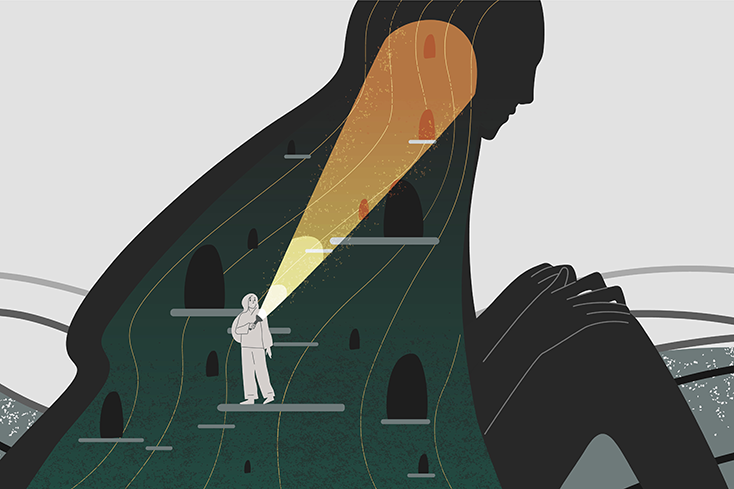
Robert, an adult in his 50s, had been processing the early emotional neglect and abuse that led to his low self-esteem and a decade-long episode of depression. Together, we had processed his rage, fear and disgust.
With my therapeutic support and his courage, he worked his way through each emotion: Naming it, validating it, sensing it physically, and allowing it to flow up and out through his body. As the wave of each core emotion rose then fell, Robert experienced relief and newfound clarity.
The most surprising part of this process for Robert, however, was the deep sadness that spontaneously emerged alongside relief, lightness and growing confidence. In accelerated experiential dynamic psychotherapy (AEDP), we call this phenomenon “mourning for the self.”
Mourning for the self is healing in action. Fully feeling the core emotions that stemmed from his past traumas, Robert developed a profound understanding of how much he had suffered. With that acknowledgment came deep sadness for what he went through.
Finding Self-Compassion
Some people confuse mourning for the self with self-pity. Merriam-Webster defines self-pity as “a self-indulgent dwelling on one’s own sorrows or misfortunes.” That is not what mourning for the self is about. Self-pity stands in stark contrast to AEDP’s definition of mourning for the self which is “a painful but liberating experience of compassion for the self.”
Processing core emotions the way we do in AEDP requires a compassionate stance toward ourselves — a stance that many people have difficulty finding. When I first met Robert, he grappled with disdain for his inner child. When I coached him to approach himself with radical compassion and acceptance, he said things like “I hate that part of me for being weak, and I blame myself. I should have been able to escape.”
I asked him, “Would you ever blame your son if a teacher or relative mistreated him?”
He retorted with an emphatic, “No!”
“Why not?” I asked.
“Because he is innocent and just a helpless child. He deserves to be seen, loved and treated kindly.”
“Exactly,” I said, “You know how to be a good parent. Can you turn all that love and compassion inward to the little boy you once were?”
And then, an epiphany. He got it.
Mourning for the self is about not only understanding what we have been through but actually feeling those experiences for ourselves.
Finding Our True Selves
The consequences of unresolved traumas are huge. For many of us, years of our lives may have been compromised by false beliefs that we were not good enough or worthy of being loved. Beliefs that others could not possibly accept us for our true selves, flaws and all, can lead to loneliness and a feeling of disconnection. For many of us, unsatisfying relationships may have been the norm because we lacked trust in others. Some of us never had the pleasure of being in our bodies, feeling vital and authentic.
I love being an AEDP therapist because I see it as a healing model with predictable results. Over and over again, I have witnessed my patients process emotions and heal from their traumas. They recover their true selves. A key part of this process involves acknowledging losses and mourning.
Tears poured down Robert’s face as one hand covered his eyes in embarrassment. “I hate crying,” he said. Feeling deep love and admiration for this man, I gently whispered, “Your sadness is beautiful. It comes from your strength. This is your love… for yourself… and it’s good to let it come.”
Hilary Jacobs Hendel is author of the international award-winning book, “It’s Not Always Depression: Working the Change Triangle to Listen to the Body, Discover Core Emotions, and Connect to Your Authentic Self” (Random House). She received her B.A. in biochemistry from Wesleyan University and an MSW from Fordham University. She is a certified psychoanalyst and AEDP psychotherapist and supervisor. She has published articles in The New York Times, Time, NBC Think, FOX News and Oprah, and her blog is read worldwide. You can find free resources on emotions and the Change Triangle tool for emotional health at hilaryjacobshendel.com and follow her work on Facebook, Twitter, Instagram and YouTube.
